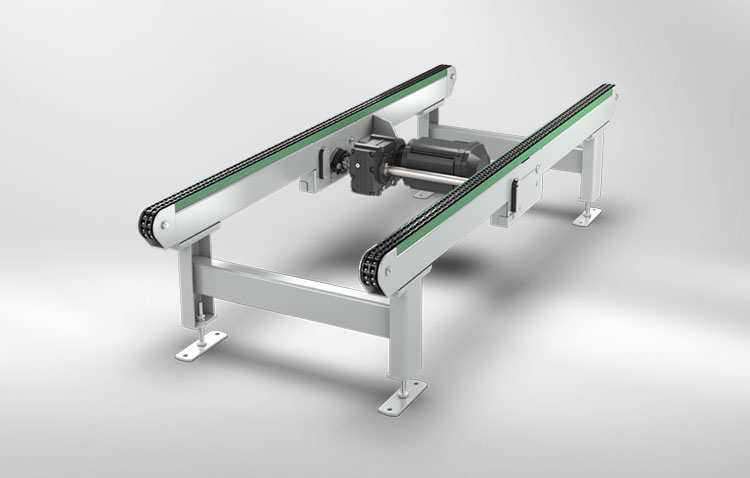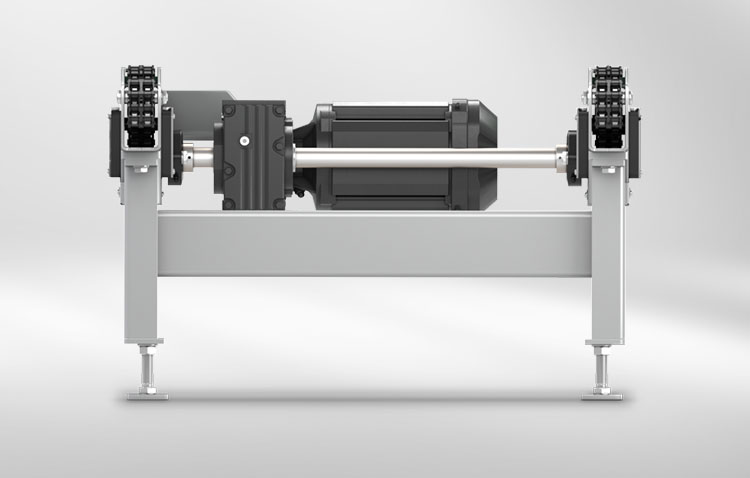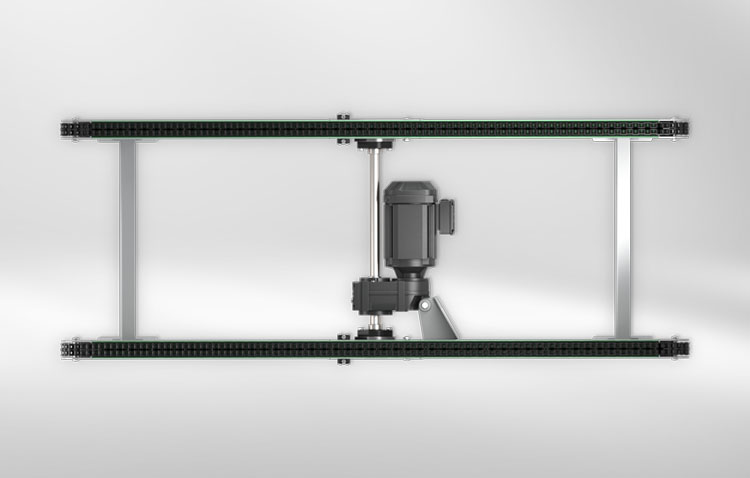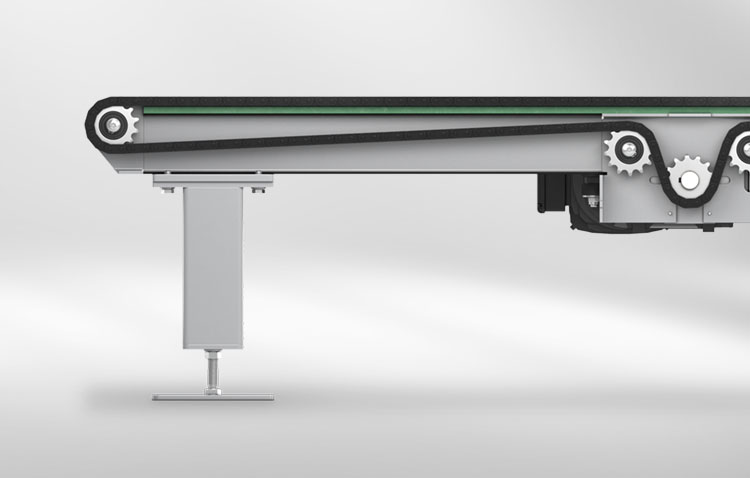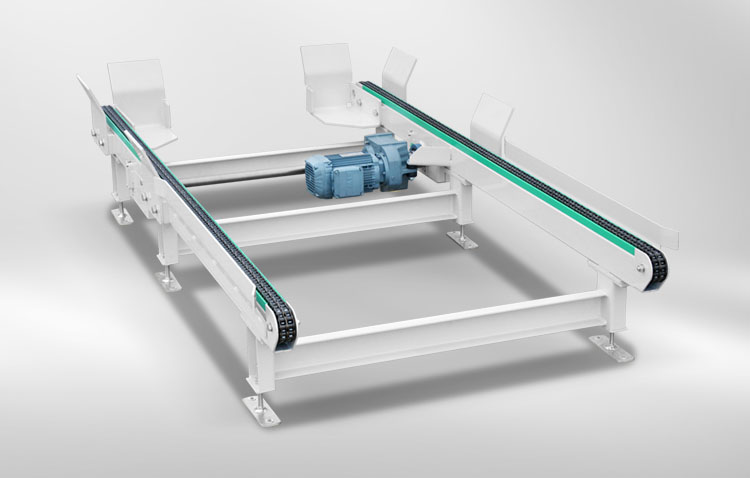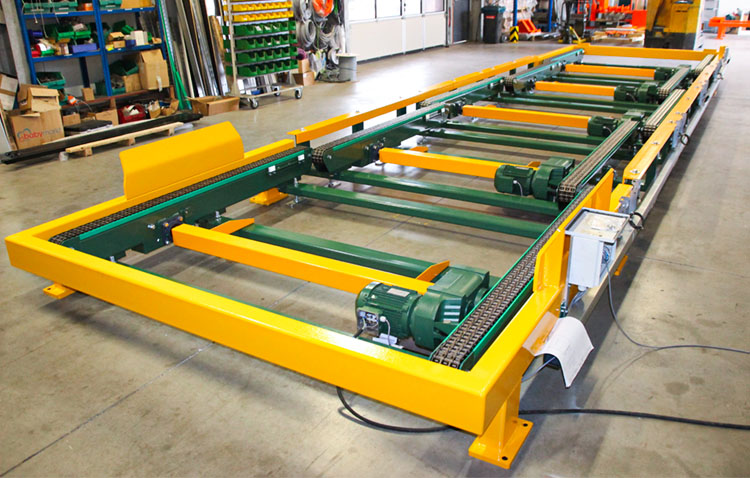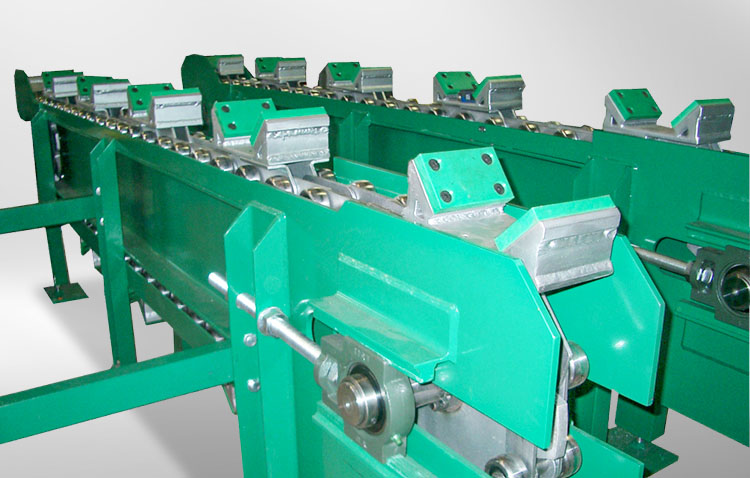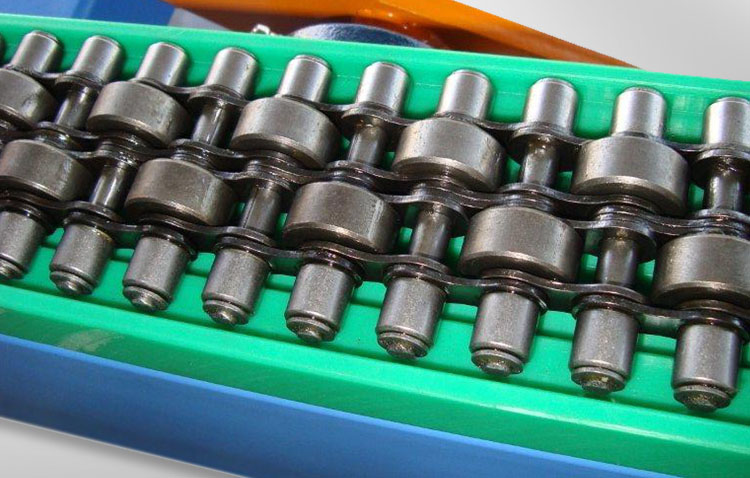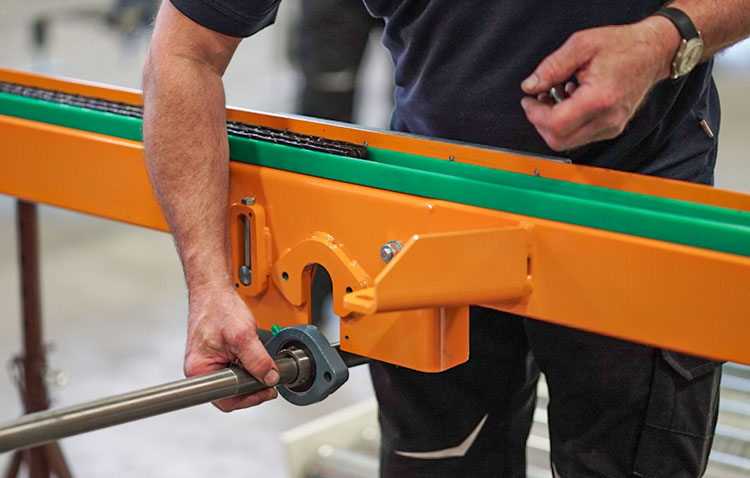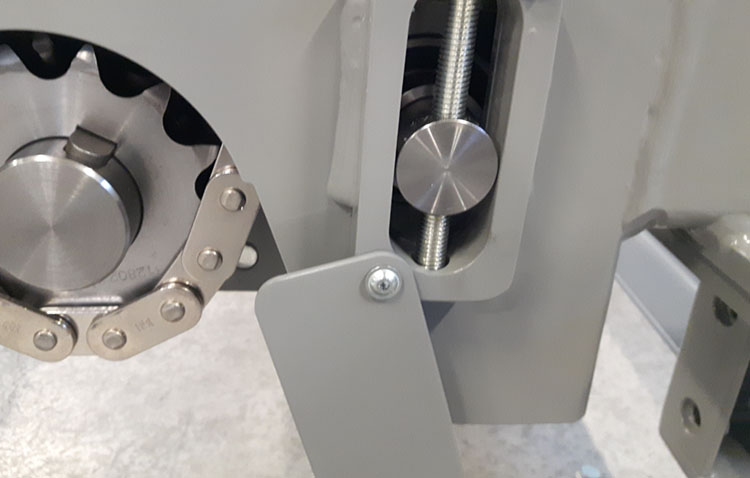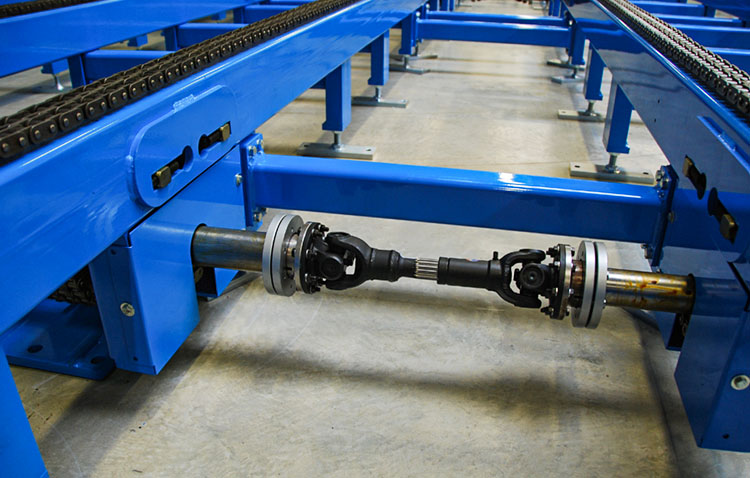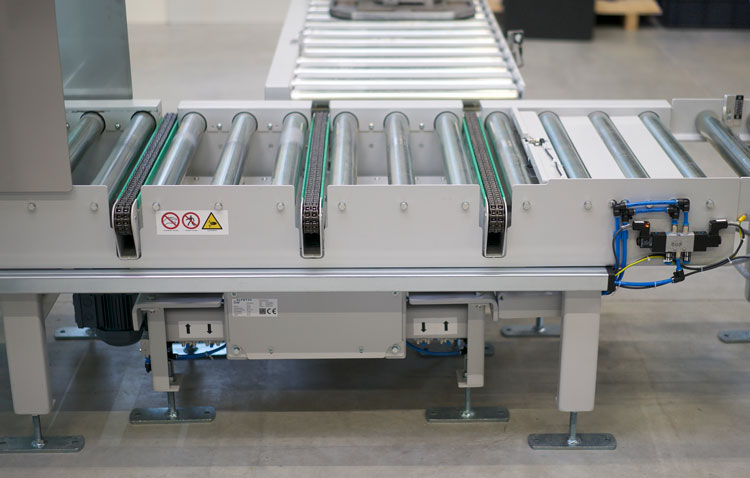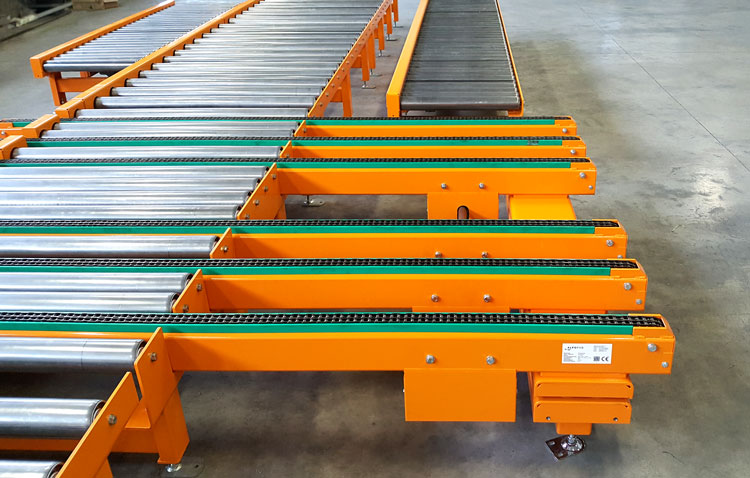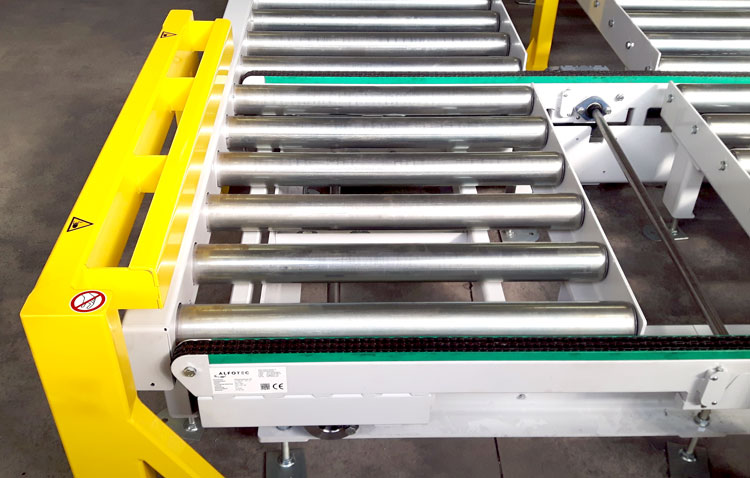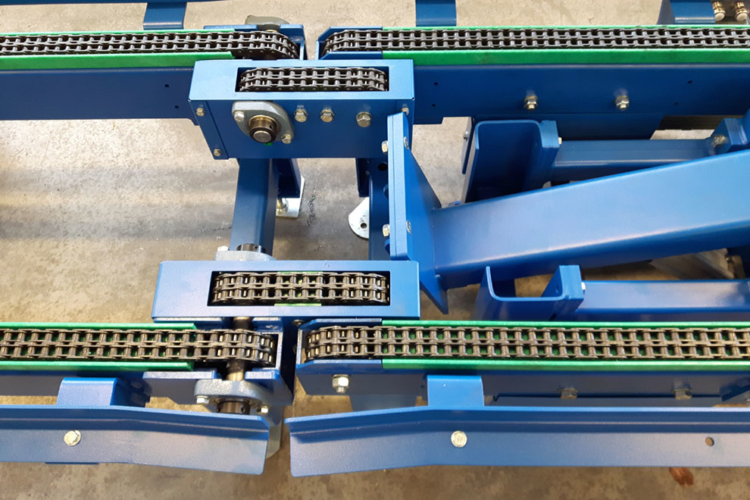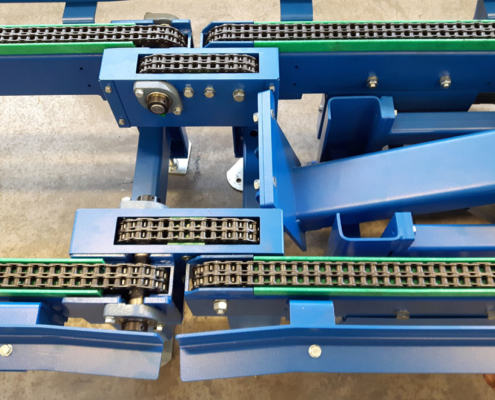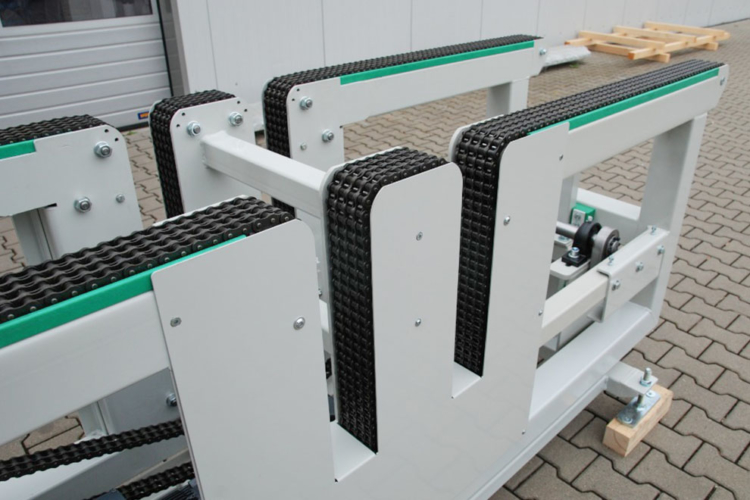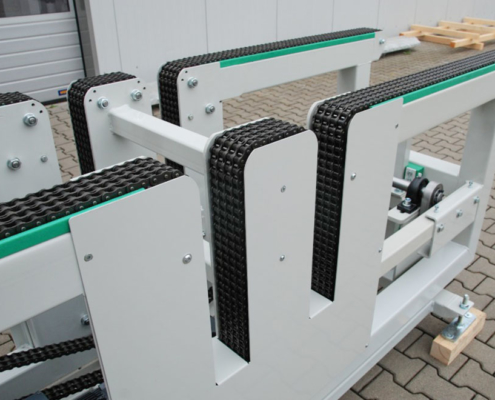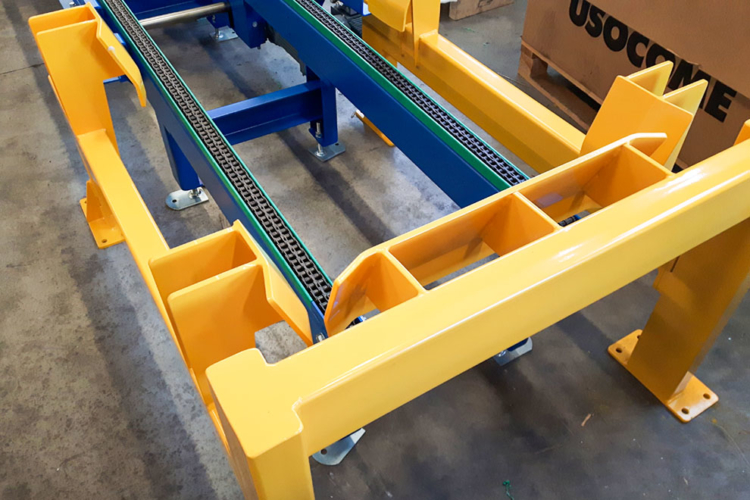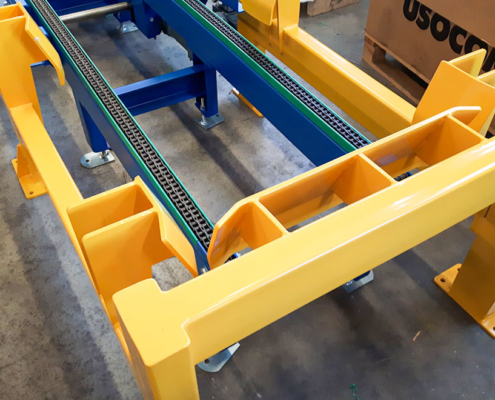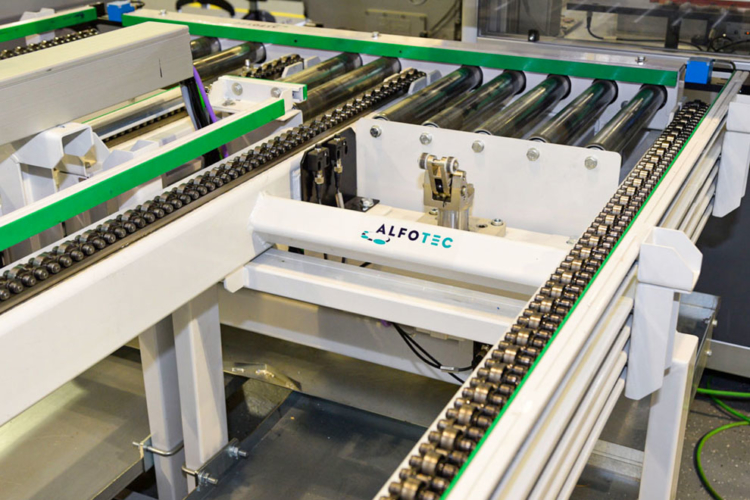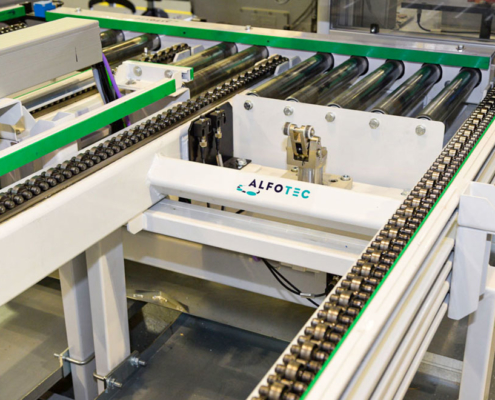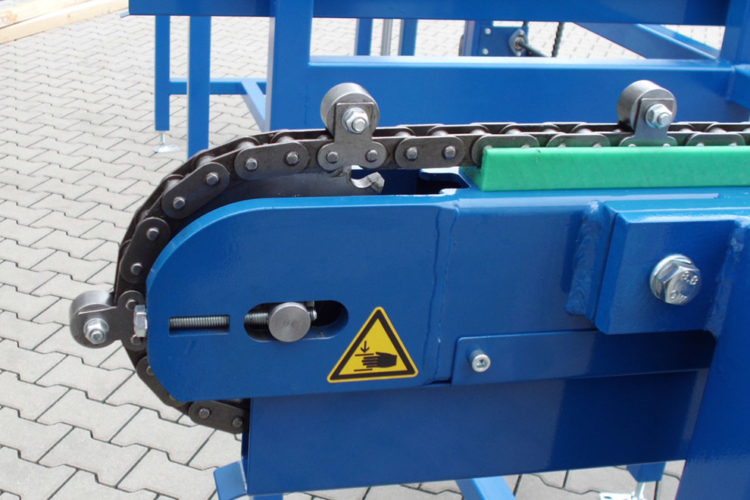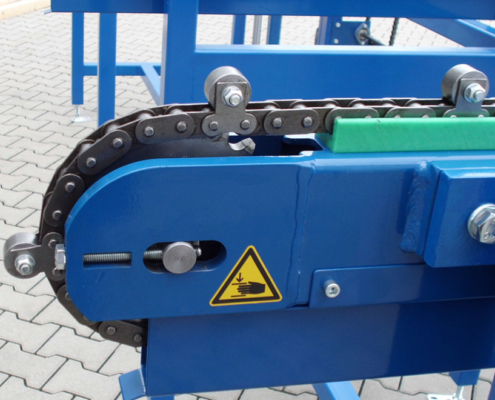Chain conveyor
Suitable for the cross transport of pallets and other conveyed goods
Chain conveyors are typical for the transverse transport of pallets and other conveyed goods with small contact surfaces, such as mesh boxes or steel frames with only a few support points. Double or multiple strand chain conveyors with different roller chains are used. As a rule, duplex chains according to DIN 8187 / ISO 606 are used, and triplex chains are also used for particularly heavy duty applications. The dimensioning of the chains is individually designed according to the mass of the transported goods, the number and size of the support points or according to special applications.
Suitable for:
- Box pallets
- Workpiece carrier
- Long materials
- And much more…
The advantages at a glance
- Robust welded construction and stable chains for transporting heavy loads
- Infinitely expandable due to modular construction
- Durable and low-maintenance due to high-quality components and clever maintenance options
- Simple individualisation and adaptation, even to adverse conditions (complicated conveyed goods, difficult environment, etc.)
- Twisting of the conveyed goods is prevented by the simultaneous drive of the chains via a common drive shaft
- Low-wear plastic chain guide profiles
- For high loads with difficult ambient conditions, a low-wear steel guide is implemented
- Buffer function through accumulation chain conveyor with side guides
- Special designs by mounting plates or drivers on angle brackets
Specifications
The following guide values apply to standard conveyors, in internal ambient conditions and for defined applications and goods conveyed.
| Length (per conveyor, fully assembled) | up to 6.000 mm |
| Width (strand divisions freely selectable) | from 100 mm |
| Overall height (motor position below) | from 250 mm |
| Overall height (motor position lateral) | from 120 mm |
| Speed | up to 30 m/min |
| Chain size Standard (single, duplex, triplex) | 1/2; 5/8; 3/4; 1 inch |
| Temperature range, standard | 5° – 50°C |
| Noise level | 55 –65 dBA |
| Drive (IE3/4), reversible | Fabrikat SEW EuroDrive |
Chain type
The chain type is selected according to the nature (type, size and weight). In many cases, the following chain designs are involved:
- Roller chain according to DIN 8187 / ISO 606 (standard single, duplex and triplex steel chains with a material thickness of 1/2″ to 2″).
- Roller chain with attachments (e.g. angle plates, elastomer profiles etc.)
- Accumulation roller chain
Drive station
- Durable and robust three-phase asynchronous gearmotor from SEW
- Economical and therefore environmentally friendly due to energy efficiency class IE3
- Reversible through Omega Station
- Low maintenance due to modular assemblies (e.g. tensioning station)
Normally, several lines are driven by one drive shaft, as long as no other restrictive (or controllable) factors, such as large conveyor dimensions or other special product properties are required. For special conditions, such as extreme loads, the chain conveyor strands are either equipped with their own gear motors or the entire unit is equipped with high-quality coupling elements.
Ejector and transfer unit
A diverter lifts the material to be conveyed and diverts it in the desired direction, thereby changing the direction of conveyance. The lift is carried out pneumatically by bellows cylinders or electro-mechanically by an eccentric lifter.
The conveying height and the conveying direction remain the same when moving by means of a turntable or carriage.
Depending on the conveying solution, pushers, linear units or gantry systems for shifting the conveyed material are also available.
